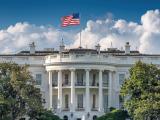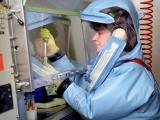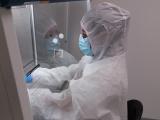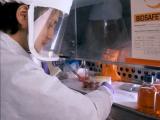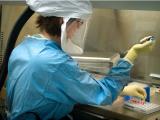Oct 25, 2010
Two commentaries address flu vaccination in health workers
Two recent commentaries emphasized the importance of vaccinating all healthcare workers (HCWs) against influenza but stopped short of calling for a mandate. Writing in Vaccine, two German scientists, Stuart McLennan and Sabine Wicker, recommend combining mandatory flu vaccination with an "opt out" clause that would require those opting out to work outside of areas "where the most vulnerable patients are cared for." Amesh A. Adalja, MD, in a report for Clinician's Biosecurity Network (CBN), recommended three steps for increasing vaccination in HCWs. CBN is part of the Center for Biosecurity at the University of Pittsburgh Medical Center. The report recommends pursuing 100% HCW coverage by (1) applying lessons learned from managing other HCW-related infectious diseases to emphasize professional responsibility, (2) including patient-safety advocates in discussions, and (3) adopting campaigns similar to hand-washing promotions. The Center for Biosecurity provided these recommendations in response to a US Health and Human Services (HHS) action plan.
Oct 22 Vaccine commentary
Oct 22 CBN report
HHS action plan
Report outlines H1N1 difficulties with cancer patients
Three North Carolina physicians reported today on the difficulty in diagnosing and treating cancer patients for pandemic 2009 H1N1 flu. Writing in Emerging Infectious Diseases, the authors said that among the lessons learned from treating four patients on chemotherapy and immunotherapy was that H1N1 diagnosis is made more difficult because of nonspecific signs and symptoms that can be attributed to problems common in immunocompromised patients. They also said that respiratory viruses may be imported and transmitted to hospitalized patients despite standard infection prevention measures. The authors reported that all four patients had oseltamivir (Tamiflu)-resistant infections, even the patient who didn't receive antivirals. All four ultimately died, although two recovered from pandemic flu before succumbing to underlying disease or secondary bacterial infections. This letter follows a July report in the same journal on 17 hospitalized oncology and hematology patients with H1N1 who had similar presentations and difficulties.
Oct 25 Emerg Infect Dis letter
July Emerg Infect Dis report
Studies suggest clues for D222G role in H1N1 flu severity
Two studies in the Journal of Virology shed new light on the D222G mutation of the 2009 H1N1 virus, a variant that has been linked to more severe and fatal illnesses. In the first study, an international group of researchers, including some from Imperial College London, explored D222G mutants isolated from fatal 2009 H1N1 cases and found that, when compared with other genetic substitutions (222D and 222E), D222G infected a broader range of cells, including a higher proportion of ciliated cells in cultures of human epithelium. Infection of the ciliated cells could impair the lungs' virus-clearing function and might explain why the D222G variant caused more severe disease. In the second study, another international research group, led by Dr Ron Fouchier from Erasmus Medical Center in Rotterdam, Netherlands, found similar results when they introduced the D222G mutation into the 2009 H1N1 virus and explored the effect on virus receptor binding and several other factors in animal models. They also conducted in vitro tests to explore D222G receptor-binding effects. The researchers found that D222G viruses retained transmissibility in aerosols and droplets in ferrets and guinea pigs. In human tissues the D222G variant displayed dual-receptor specificity to beta 2,3- and beta 2,6-linked sialic acids, which influenced interaction with lower respiratory tract cells, a findings that they wrote could explain more serious disease from the D222G variant.
Oct 22 Imperial College London press release
Nov J Virol abstract on D222G from fatal cases
Nov J Virol abstract on animal models
New adenovirus in monkeys may have infected human
A novel adenovirus killed monkeys in a research center in California and may have infected a worker there, according to a report presented at the Infectious Diseases Society of America's (IDSA's) annual meeting last week. Charles Y. Chiu, MD, PhD, of the University of California, San Francisco, said at a press conference that the disease struck 22 of 55 Titi monkeys at the California National Primate Research Center in Davis, killing 19 of them. The monkeys, which were treated with antiviral and antifungal drugs, had fever, sore throat, shortness of breath, and, in fatal cases, respiratory failure. An investigator at the center was sick with similar symptoms at the time of the outbreak, but she recovered in a month without hospitalization. Testing of monkey samples with the Virochip, a DNA microarray designed to detect all known and novel viruses, pointed to a new adenovirus, and sequencing of the virus revealed that it was a member of a new group, Chiu reported. Subsequent serologic testing showed strong antibody responses in the monkeys that had survived the illness but not in negative controls. Serum collected from the investigator 6 months after her illness was also positive for the virus, which suggested but did not prove cross-species transmission, Chiu said. "The take-home message is that this is, we believe, the first credible evidence that adenoviruses, which have traditionally been thought not to cross species, have the potential for cross-species transmission," he said.

